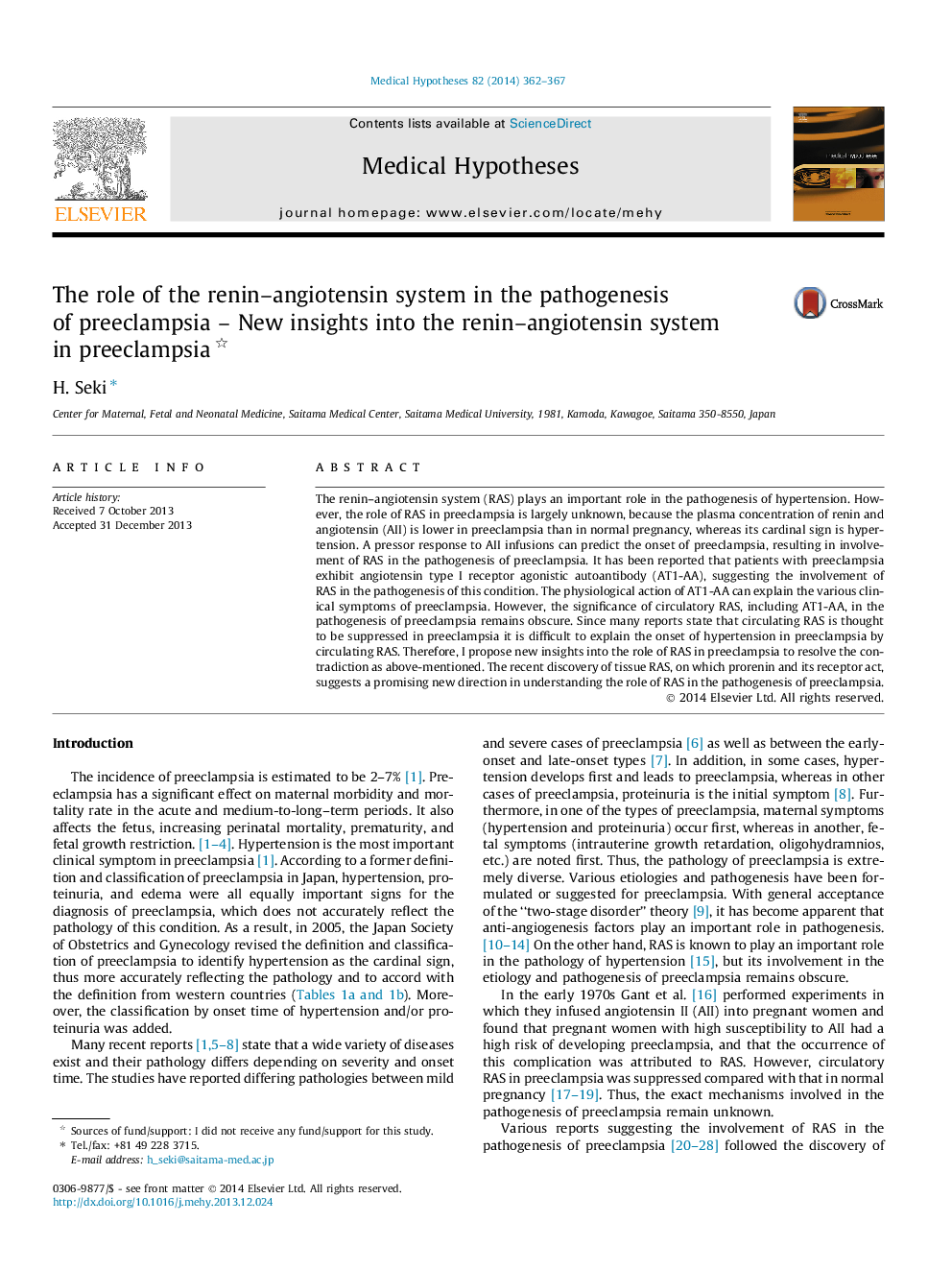| Article ID | Journal | Published Year | Pages | File Type |
|---|---|---|---|---|
| 5811865 | Medical Hypotheses | 2014 | 6 Pages |
The renin-angiotensin system (RAS) plays an important role in the pathogenesis of hypertension. However, the role of RAS in preeclampsia is largely unknown, because the plasma concentration of renin and angiotensin (AII) is lower in preeclampsia than in normal pregnancy, whereas its cardinal sign is hypertension. A pressor response to AII infusions can predict the onset of preeclampsia, resulting in involvement of RAS in the pathogenesis of preeclampsia. It has been reported that patients with preeclampsia exhibit angiotensin type I receptor agonistic autoantibody (AT1-AA), suggesting the involvement of RAS in the pathogenesis of this condition. The physiological action of AT1-AA can explain the various clinical symptoms of preeclampsia. However, the significance of circulatory RAS, including AT1-AA, in the pathogenesis of preeclampsia remains obscure. Since many reports state that circulating RAS is thought to be suppressed in preeclampsia it is difficult to explain the onset of hypertension in preeclampsia by circulating RAS. Therefore, I propose new insights into the role of RAS in preeclampsia to resolve the contradiction as above-mentioned. The recent discovery of tissue RAS, on which prorenin and its receptor act, suggests a promising new direction in understanding the role of RAS in the pathogenesis of preeclampsia.
